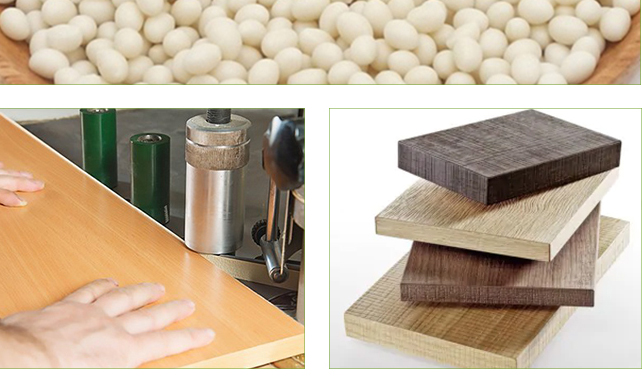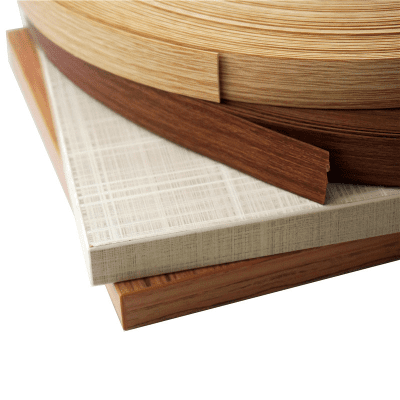The choice of adhesive for edge banding depends on the type of edge banding material you’re using and the specific requirements of your project. Different edge banding materials, such as veneer, PVC, or ABS, may require different types of adhesives for optimal bonding. Here are some common adhesive options for edge banding:

- Hot Melt Adhesive (Hot Glue): Hot melt adhesive is a popular choice for edge banding due to its quick bonding and strong initial tack. It is often used with PVC and ABS edge banding materials. Hot melt adhesive is applied using a hot glue gun or specialized edge banding equipment that melts the adhesive and applies it to the edge of the material. It cools and solidifies rapidly, creating a strong bond.
- Pressure-Sensitive Adhesive (PSA): PSA adhesive is a self-adhesive option that comes with a peel-and-stick backing. It is commonly used with veneer edge banding. Simply peel off the backing and apply the edge banding to the substrate, then use pressure to ensure a secure bond. PSA adhesive provides good initial tack and is easy to work with.
- Contact Cement: Contact cement is a versatile adhesive that can be used with a variety of edge banding materials, including veneer, PVC, and ABS. It is applied to both the edge of the material and the substrate, and after allowing it to dry, the two surfaces are pressed together to create a strong bond. Contact cement provides excellent bond strength and flexibility.
- Water-Based Adhesive: Water-based adhesives are suitable for a range of edge banding materials, including veneer and melamine. They are less toxic than solvent-based adhesives and are easy to clean up. Water-based adhesives typically require longer drying times but offer good bond strength and versatility.
- Solvent-Based Adhesive: Solvent-based adhesives are strong and fast-setting, making them suitable for various edge banding materials. However, they can be more volatile and have stronger odors compared to water-based adhesives. Proper ventilation is important when using solvent-based adhesives.
- Polyurethane Adhesive: Polyurethane adhesive is known for its strong bond and durability. It can be used with different types of edge banding materials and provides resistance to moisture and heat. Polyurethane adhesive requires a longer curing time and may be more challenging to work with due to its expanding nature as it cures.

When selecting an adhesive for edge banding, it’s essential to consider factors such as compatibility with the edge banding material, ease of application, drying or curing time, bond strength, and the specific conditions the finished piece will be exposed to. It’s a good practice to follow the manufacturer’s recommendations for adhesive selection and application techniques to ensure a successful and long-lasting bond.
